Report Details
Not found what are you looking for

Agriculture
Agricultural Biotechnology Market Size, Share & Analysis By Type (Hybrid Seeds, Transgenic Crops, Biopesticides, Biofertilizers), By Crop Type (Soybean, Maize, Cotton, Others), By Technology (Genetic Engineering, Tissue Culture, Embryo Rescue, Somatic Hybridization, Molecular Diagnostics, Vaccine, Others), By Application (Crop Production, Crop Protection, Chemical Tolerance, Disease Tolerance, Others), By Regional Outlook, Competitive Landscape And Forecast, 2032
By Type : Hybrid Seeds, Transgenic Crops, Biopesticides, Biofertilizers
By Application : Crop Production, Crop Protection, Chemical Tolerance, Disease Tolerance, Others
Description
ToC
Companies
Speak with Analyst
Agricultural Biotechnology Market Overview 2023:
The global agricultural biotechnology market size was USD 101.44 billion in 2022 and is expected to register a rapid CAGR of 8.5% during the forecast period. Key factors such as rising demand for high-quality food due to rapidly expanding population, rapid advancements in biotechnology, and rising need for sustainable agriculture are expected to drive global market growth during the forecast period.
Crops in general are prone to several factors such as pests, diseases, weeds, environmental stresses, and nutrient imbalances. Agricultural biotechnology allows for the development of crops with improved yields and resistance to these factors and helps farmers produce more food on existing agricultural land.
Agricultural biotechnology offers a wide range of tools and techniques to address various issues in agriculture, from improving crop yields and nutritional content to promoting sustainable farming practices. The main goal is to enhance the efficiency, productivity, and sustainability of agricultural production systems. Various biotechnological tools and techniques such as genetic engineering, molecular diagnostics, vaccines, tissue culture, and molecular markers help in enhancing crop productivity, improving nutritional content, reducing environmental impact, conserving biodiversity, addressing climate change and improving livestock health and production.
However, the regulatory environment for agricultural biotech varies across the globe. This can hamper market growth and innovation. In addition, the adoption of agricultural biotechnology requires significant investments in R&D, infrastructure, and equipment. This can lead to limited adoption, especially in the developing countries.
Key Takeaways:
Rising Demand for Good Quality Crop and High Focus on Biofuel Production:
There has been a constant demand for good quality crops and food to cater to rising population across the globe. Agricultural biotech helps in producing higher yields, disease-resistant crops, and enhanced nutritional content. Moreover, it plays a crucial role in the production of biofuels from crops such as corn, algae, and sugarcane, contributing to renewable energy sources and reducing reliance on fossil fuels.
Increasing Concerns About Safety and Ethics:
Though the agricultural biotechnology sector is rapidly expanding, there are rising concerns about safety, ethics, and potential environmental impacts of genetically modified organisms and biotechnologically modified crops among consumers, stakeholders, and activists, leading to resistance to adoption and skepticism.
Market Opportunities:
The agricultural biotechnology market is expected to open new avenues to leading companies and new entrants in the market driven by technological advancements, high demand for sustainable agricultural practices, and global challenges such as food security, resource constraints, and climate change.
Crop Type Outlook:
The global market is segmented into soybean, maize, cotton, and others based on crop types. Among these, the soybean segment is expected to register rapid revenue CAGR over the forecast period. This growth can be attributed to increasing popularity of soybean across many parts of the globe due to its nutritional value, versatility health benefits, and cultural acceptance, high susceptibility rate in soybean to various fungal and bacterial diseases and nematode pests, and increasing usage of agricultural biotechnology techniques for herbicide tolerance and insect tolerance.
Application Outlook:
Based on applications, the global market is segmented into crop production, crop protection, chemical tolerance, disease tolerance, and others. The crop production segment is expected to account for largest revenue share between 2023 and 2032 owing to rising demand for high-quality food and food products, rising climatic concerns such as drought, temperature, and soil infertility affecting crop production, and high usage of agricultural biotechnology techniques such as GMO, MAS, tissue culture, RNA interference technology, and abiotic stress tolerance to enhance plant trait, improve yield quality and sustainability.
Regional Outlook:
North America is expected to account for a significant revenue share in the global market during the forecast period owing to technological advancements in biotechnology and agriculture, rising population and food demand, rising concerns about climate and environment, and high adoption of various advanced services and tools for pest and disease management and crop yield. In addition, rising investments in R&D from public and private sectors, favorable regulatory support and framework, growing demand for sustainable agriculture and rising collaborations and partnerships among companies, universities, and institutions are expected to drive North America market growth during the forecast period.
Report Coverage:
| Report Details | Outcome |
| Base Year for Estimation | 2022 |
| Historical Data | 2018-2021 |
| Forecast Period | 2023-2032 |
| Segments Covered: | Type, Crop Type, Technology, Application and Region |
| By Type | Hybrid Seeds, Transgenic Crops, Biopesticides, Biofertilizers |
| By Crop Type | Soybean, Maize, Cotton, Others |
| By Technology | Genetic Engineering, Tissue Culture, Embryo Rescue, Somatic Hybridization, Molecular Diagnostics, Vaccine, Others |
| By Application | Crop Production, Crop Protection, Chemical Tolerance, Disease Tolerance, Others |
| Regional Scope | North America, Europe, Asia Pacific, Latin America, Middle East and Africa |
| Country Scope | United States, Canada, Germany, France, UK, Italy, Russia, China, Japan, South Korea, Southeast Asia, India, Mexico, Brazil, Saudi Arabia, UAE, Turkey |
| Qualitative Info | •Value Chain Analysis •Pricing Analysis •Regional Outlook •Market Trends •Market Share Analysis •Competition Analysis •Technological Advancements |
| Key Players | Monsanto, Syngenta, Bayer CropScience, Corteva Agriscience, DuPont- Pioneer hi-Bred International, Vilmorin, Dow AgroSciences, Evogene Ltd, KWS SAAT AG, Certis USA, Mycogen Seeds, ADAMA Agricultural Solutions Ltd., Bio-chem Technology, Performance Plants, Inc., Rubicon |
| Customization Scope | 10 Hours of Free Customization and Expert Consultation |
Competitive Landscape:
The global agricultural biotechnology market is extremely competitive, comprising several key regional and global players. Leading key players are focused on adopting various strategic alliances like mergers and acquisitions, partnerships, joint ventures, collaborations, and product launches to maintain their global position and enhance their product offerings. They are also focused on innovation, and scalability, adapting to evolving technology trends and consumer needs.
Some Leading Market Companies Listed in the Report:
- Monsanto
- Syngenta
- Bayer CropScience
- Corteva Agriscience
- DuPont- Pioneer hi-Bred International
- Vilmorin
- Dow AgroSciences
- Evogene Ltd
- KWS SAAT AG
- Certis USA
- Mycogen Seeds
- ADAMA Agricultural Solutions Ltd.
- Bio-chem Technology
- Performance Plants, Inc.
- Rubicon
Agricultural Biotechnology Industry Recent Developments:
- In September 2023, Croda announced the launch of Atlox BS-50, a delivery system to meet the growing needs of the biopesticide market.
- In January 2023, Bayer announced its partnership with Oerth Bio, a leading agricultural biotech company to develop and launch the next generation of more sustainable crop production products.
The global agricultural biotechnology market has been segmented based on type, crop type, technology, application, and region:
By Type:
- Hybrid Seeds
- Transgenic Crops
- Biopesticides
- Biofertilizers
By Crop Type:
- Soybean
- Maize
- Cotton
- Others
By Technology:
- Genetic Engineering
- Tissue Culture
- Embryo Rescue
- Somatic Hybridization
- Molecular Diagnostics
- Vaccine
- Others
By Application:
- Crop Production
- Crop Protection
- Chemical Tolerance
- Disease Tolerance
- Others
By Region:
- North America
- United States
- Canada
- Europe
- Germany
- France
- UK
- Italy
- Russia
- Nordic Countries
- Asia Pacific
- China
- Japan
- South Korea
- Southeast Asia
- India
- Australia
- Rest of Asia
- Latin America
- Mexico
- Brazil
- Rest of Latin America
- Middle East & Africa
- Turkey
- Saudi Arabia
- UAE
- Rest of MEA
FAQ
- You should buy this report from Xcellent Insights for a better clarity on market scenarios.
- The market report has been prepared using a pragmatic approach to suit your needs.
- We have an extensive library of reports that can help you understand the market landscape and make informed decisions about your business.
- Additionally, the reports are written by experienced analysts who have a deep understanding of the market and the latest trends.
- Besides, customization is a value-added service if you decide to opt.
Chapter 1. Methodology and Scope
1.1. Methodology Segmentation & Scope
1.2. Information Procurement
1.2.1. Purchased database
1.2.2. Secondary Sources
1.2.3. Third-party Perspectives
1.2.4. Primary research
1.3. Information Analysis
1.3.1. Data Analysis Models
1.4. Market Formulation & Data Visualization
1.5. Research Scope & Assumptions
Chapter 2. Executive Summary
2.1. Agricultural Biotechnology Market- Industry Snapshot, 2018 - 2032
Chapter 3. Agricultural Biotechnology Market Variables, Trends & Scope
3.1. Market Size and Growth Prospects, 2023-2032
3.2. Industry Value Chain Analysis
3.3. Market Dynamics
3.3.1. Market Driver Analysis
3.3.2. Market Restraint/Challenge Analysis
3.3.3. Market Opportunity Analysis
3.4. Penetration & Growth Prospect Mapping
3.5. Business Environment Analysis Tools
3.5.1. Industry Analysis - Porter's Five Forces Analysis
3.5.2. PEST Analysis
3.5.3. COVID-19 Impact Analysis
Chapter 4. Agricultural Biotechnology Market Type Outlook 2023-2032 (USD Million)
Chapter 5. Agricultural Biotechnology Market Application Outlook 2023-2032(USD Million)
Chapter 6: Coronavirus Diseases (COVID-19) Impact:
6.1. Introduction
6.2 Current and Future Impact Analysis
6.3 Economic Impact Analysis
6.4 Investment Scenario
Chapter 7. North America Agricultural Biotechnology Market Share by Region, 2023 & 2032 (USD Million)
7.1. Market Estimates and Forecast 2023 - 2032 (USD Million)
7.2. Market Estimates and Forecast by Type, 2023-2032 (USD Million)
7.3. Market Estimates and Forecast by Application, 2023-2032 (USD Million)
7.4.1. U.S.
7.4.1.1. Market Estimates and Forecast 2023-2032 (USD Million)
7.4.1.2. Market Estimates and Forecast by Type, 2023-2032 (USD Million)
7.4.1.3 Market Estimates and Forecast by Application, 2023-2032 (USD Million)
7. 4.2. Canada
7. 4.2.1. Market Estimates and Forecast 2023-2032 (USD Million)
7. 4.2.2. Market Estimates and Forecast by Type, 2023-2032 (USD Million)
7. 4.2.3 Market Estimates and Forecast by Application, 2023-2032 (USD Million)
Chapter 8. Europe Agricultural Biotechnology Market Share by Region, 2023 & 2032 (USD Million)
8.1. Market Estimates and Forecast 2023 - 2032 (USD Million)
8.2. Market Estimates and Forecast by Type, 2023-2032 (USD Million)
8.3. Market Estimates and Forecast by Application, 2023-2032 (USD Million)
8.4.1. Germany
8.4.1.1. Market Estimates and Forecast 2023-2032 (USD Million)
8.4.1.2. Market Estimates and Forecast by Type, 2023-2032 (USD Million)
8.4.1.3. Market Estimates and Forecast by Application, 2023-2032 (USD Million)
8.4.2. France
8.4.2.1. Market Estimates and Forecast 2023-2032 (USD Million)
8.4.2.3. Market Estimates and Forecast by Type, 2023-2032 (USD Million)
8.4.2.3. Market Estimates and Forecast by Application 2023-2032 (USD Million)
8.4.3. UK
8.4.3.1. Market Estimates and Forecast 2023-2032 (USD Million)
8.4.3.2. Market Estimates and Forecast by Type, 2023-2032 (USD Million)
8.2.3.3. Market Estimates and Forecast by Application 2023-2032 (USD Million)
8.4.4. Italy
8.4.4.1. Market Estimates and Forecast 2023-2032 (USD Million)
8.4.4.2. Market Estimates and Forecast by Type, 2023-2032 (USD Million)
8.4.4.3. Market Estimates and Forecast by Application 2023-2032 (USD Million)
8.4.5. Russia
8.4.5.1. Market Estimates and Forecast 2023-2032 (USD Million)
8.4.5.2. Market Estimates and Forecast by Type, 2023-2032 (USD Million)
8.4.5.3. Market Estimates and Forecast by Application 2023-2032 (USD Million)
8.4.6. Nordic Countries
8.4.6.1. Market Estimates and Forecast 2023-2032 (USD Million)
8.4.6.2. Market Estimates and Forecast by Type, 2023-2032 (USD Million)
8.4.6.3. Market Estimates and Forecast by Application 2023-2032 (USD Million)
8.4.7. Rest of Europe
8.4.7.1. Market Estimates and Forecast 2023-2032 (USD Million)
8.4.7.2. Market Estimates and Forecast by Type, 2023-2032 (USD Million)
8.4.7.3. Market Estimates and Forecast by Application, 2023-2032 (USD Million)
Chapter 9. Asia Pacific Agricultural Biotechnology Market Share by Region, 2023 & 2032 (USD Million)
9.1. Market Estimates and Forecast 2023 - 2032 (USD Million)
9.2. Market Estimates and Forecast by Type, 2023-2032 (USD Million)
9.3. Market Estimates and Forecast by Application, 2023-2032 (USD Million)
9.4.1. China
9.4.1.1. Market Estimates and Forecast 2023-2032 (USD Million)
9.4.1.2. Market Estimates and Forecast by Type, 2023-2032 (USD Million)
9.4.1.3. Market Estimates and Forecast by Application, 2023-2032 (USD Million)
9.4.2. Japan
9.4.2.1. Market Estimates and Forecast 2023-2032 (USD Million)
9.4.2.2. Market Estimates and Forecast by Type, 2023-2032 (USD Million)
9.4.2.3. Market Estimates and Forecast by Application, 2023-2032 (USD Million)
9.4.3. South Korea
9.4.3.1. Market Estimates and Forecast 2023-2032 (USD Million)
9.4.3.2. Market Estimates and Forecast by Type, 2023-2032 (USD Million)
9.4.3.3. Market Estimates and Forecast by Application, 2023-2032 (USD Million)
9.4.4. India
9.4.4.1. Market Estimates and Forecast 2023-2032 (USD Million)
9.4.4.2. Market Estimates and Forecast by Type, 2023-2032 (USD Million)
9.4.4.3. Market Estimates and Forecast by Application, 2023-2032 (USD Million)
9.4.5. Australia
9.4.5.1. Market Estimates and Forecast 2023-2032 (USD Million)
9.4.5.2. Market Estimates and Forecast by Type, 2023-2032 (USD Million)
9.4.5.3. Market Estimates and Forecast by Application, 2023-2032 (USD Million)
9.4.6. Rest of Asia Pacific
9.4.6.1. Market Estimates and Forecast 2023-2032 (USD Million)
9.4.6.2. Market Estimates and Forecast by Type, 2023-2032 (USD Million)
9.4.6.3. Market Estimates and Forecast by Application, 2023-2032 (USD Million)
Chapter 10. Latin America Agricultural Biotechnology Market Share by Region, 2023 & 2032 (USD Million)
10.1. Market Estimates and Forecast 2023 - 2032 (USD Million)
10.2. Market Estimates and Forecast by Type, 2023-2032 (USD Million)
10.3. Market Estimates and Forecast by Application, 2023-2032 (USD Million)
10.4.1. Mexico
10.4.1.1. Market Estimates and Forecast 2023-2032 (USD Million)
10.4.1.2. Market Estimates and Forecast by Type, 2023-2032 (USD Million)
10.4.1.3. Market Estimates and Forecast by Application, 2023-2032 (USD Million)
10.4.2. Brazil
10.4.2.1. Market Estimates and Forecast 2023-2032 (USD Million)
10.4.2.2 Market Estimates and Forecast by Type, 2023-2032 (USD Million)
10.4.2.3. Market Estimates and Forecast by Application, 2023-2032 (USD Million)
10.4.3 Rest of Latin America
10.4.3.1 Market Estimates and Forecast 2023-2032 (USD Million)
10.4.3.2. Market Estimates and Forecast by Type, 2023-2032 (USD Million)
10.4.3.3. Market Estimates and Forecast by Application, 2023-2032 (USD Million)
Chapter 11. Middle East and Africa Agricultural Biotechnology Market Share by Region, 2023 & 2032 (USD Million)
11.1. Market Estimates and Forecast 2023 - 2032 (USD Million)
11.2. Market Estimates and Forecast by Type, 2023-2032 (USD Million)
11.3. Market Estimates and Forecast by Application, 2023-2032 (USD Million
11.4.1 Turkey
11.4.1.1 Market Estimates and Forecast 2023-2032 (USD Million)
11.4.4.2. Market Estimates and Forecast by Type, 2023-2032 (USD Million)
11.4.4.3. Market Estimates and Forecast by Application, 2023-2032 (USD Million)
11.4.2. Saudi Arabia
11.4.2.1. Market Estimates and Forecast 2023-2032 (USD Million)
11.4.2.2 Market Estimates and Forecast by Type, 2023-2032 (USD Million)
11.4.2.3. Market Estimates and Forecast by Application, 2023-2032 (USD Million)
11.4.3 UAE
11.4.3.1. Market Estimates and Forecast 2023-2032 (USD Million)
11.4.3.2. Market Estimates and Forecast by Type, 2023-2032 (USD Million)
11.4.4.1. Market Estimates and Forecast by Application, 2023-2032 (USD Million)
11.4.5. Rest of MEA
11.4.5.1. Market Estimates and Forecast 2023-2032 (USD Million)
11.4.5.2. Market Estimates and Forecast by Type, 2023-2032 (USD Million)
11.4.5.3. Market Estimates and Forecast by Application, 2023-2032 (USD Million)
Chapter 12 Agricultural Biotechnology Market Competitive Landscape
- Monsanto
- Syngenta
- Bayer CropScience
- Corteva Agriscience
- DuPont- Pioneer hi-Bred International
- Vilmorin
- Dow AgroSciences
- Evogene Ltd
- KWS SAAT AG
- Certis USA
- Mycogen Seeds
- ADAMA Agricultural Solutions Ltd.
- Bio-chem Technology
- Performance Plants, Inc.
- Rubicon
Tables and Figures
- Monsanto
- Syngenta
- Bayer CropScience
- Corteva Agriscience
- DuPont- Pioneer hi-Bred International
- Vilmorin
- Dow AgroSciences
- Evogene Ltd
- KWS SAAT AG
- Certis USA
- Mycogen Seeds
- ADAMA Agricultural Solutions Ltd.
- Bio-chem Technology
- Performance Plants, Inc.
- Rubicon
Why Choose Us
- Extensive Library of Reports.
- Identify the clients' needs.
- Pragmatic Research Approach.
- Clarity on Market Scenarios.
- Tailor-Made Solutions.
- Expert Analysts Team.
- Competitive and Fair Prices.
Clientele
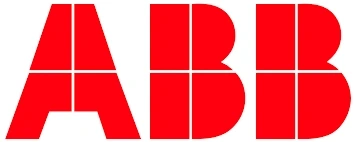
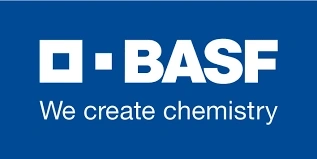
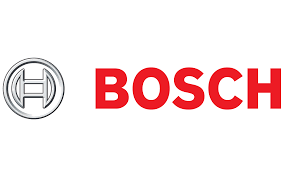

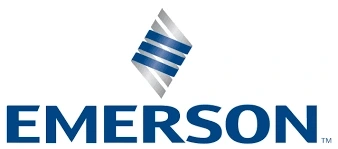

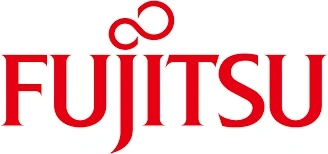
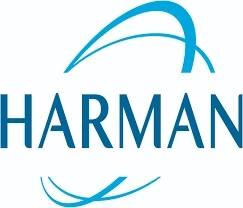





Thank you
Xcellent Insights has received your query!